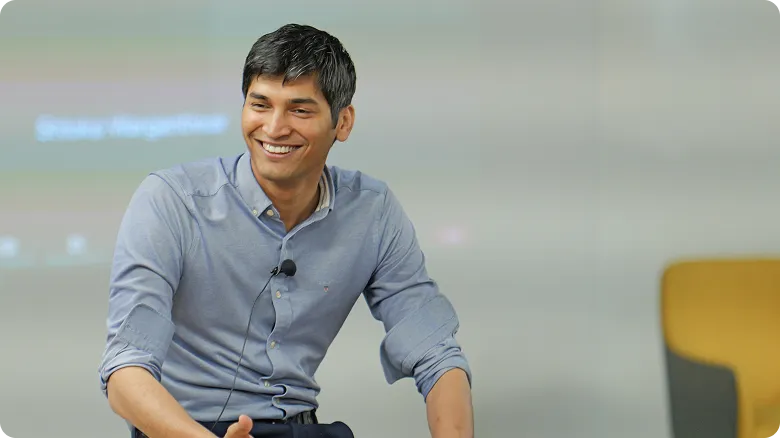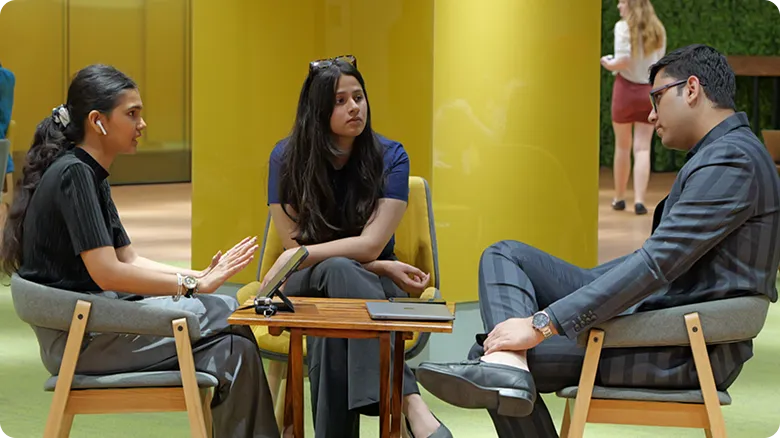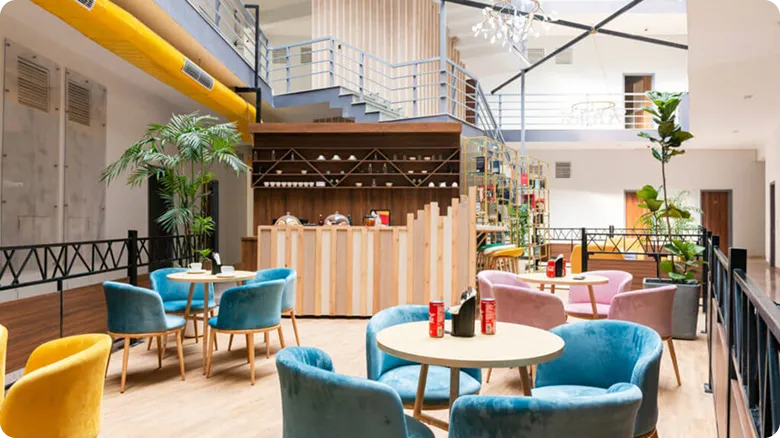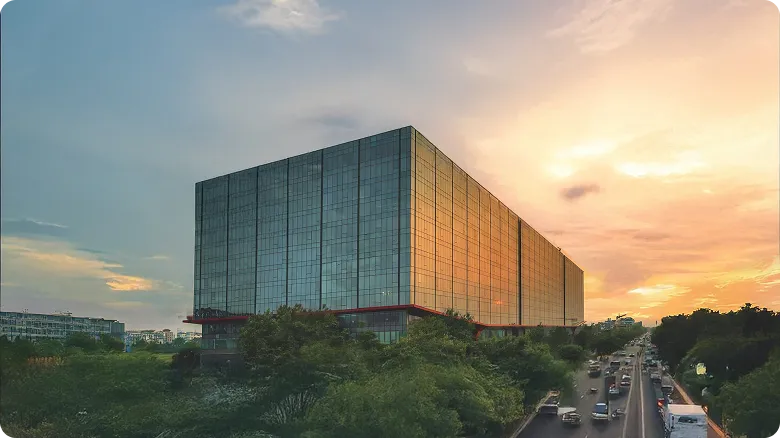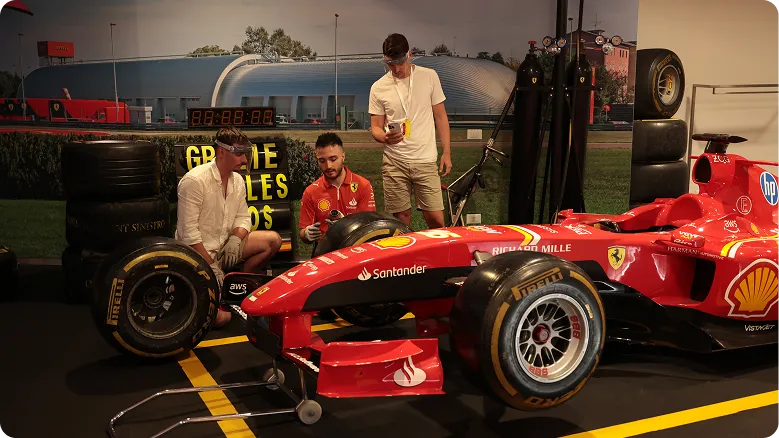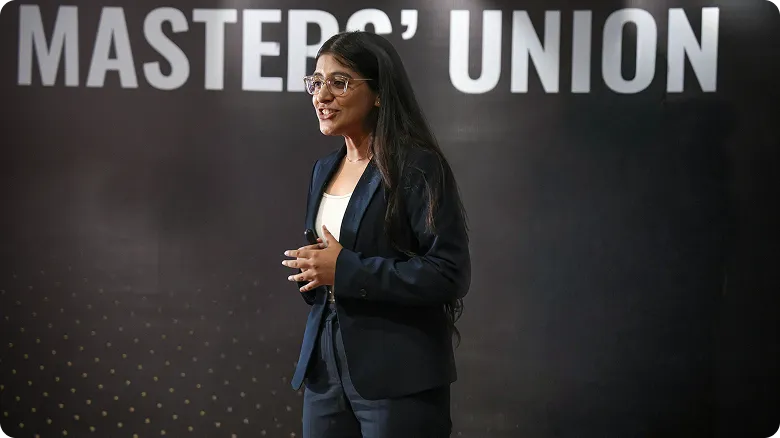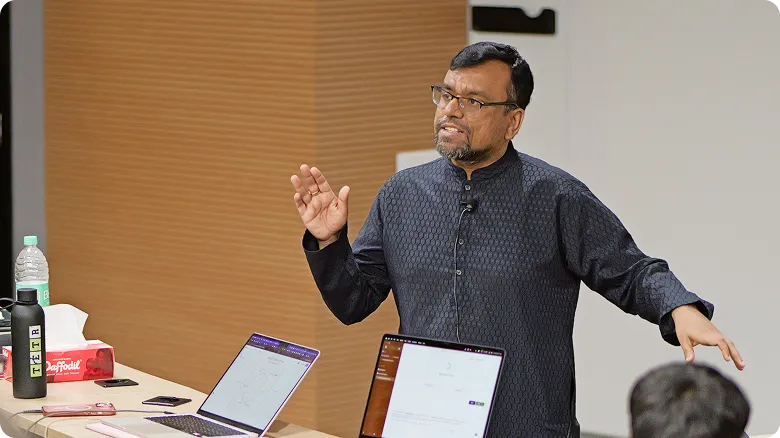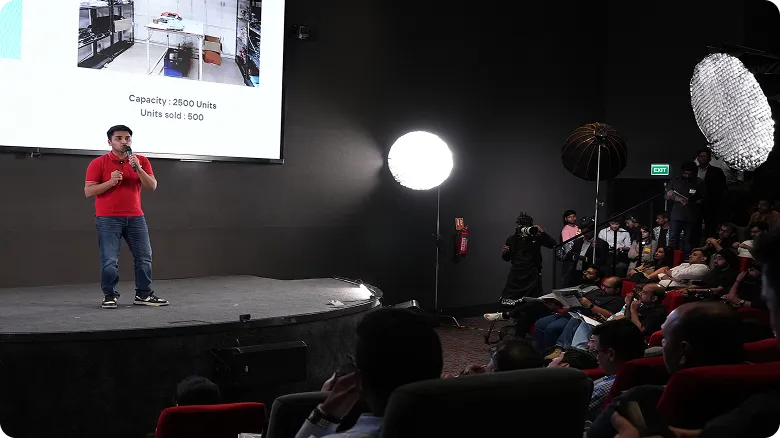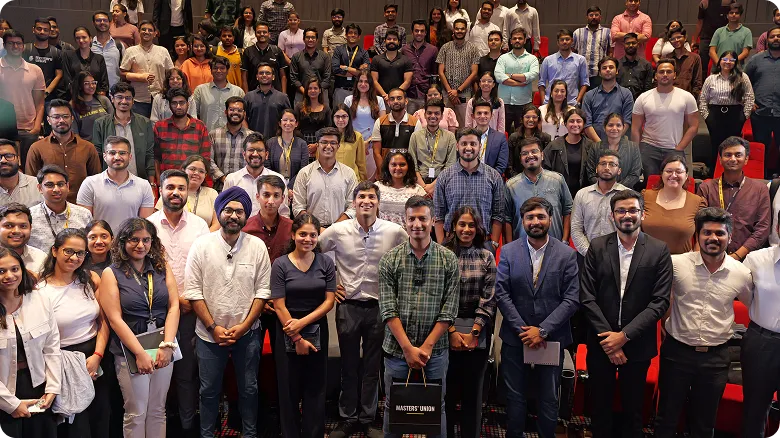Apply to the Shark Tank S5 Campus Special (Open to All Students)
Apply NowUndergraduate
Undergraduate (Global)
Postgraduate
Executive
Family Business
Careers
Innovations
Faculty
MU Ventures
Student Life
Jobs
Become a Master
events
For Companies
Blog
Business
How Gaurav Khatri Built ‘Noise’: A Deep Dive into India’s Most Remarkable Bootstrapped Electronics Brand
May 30, 2025
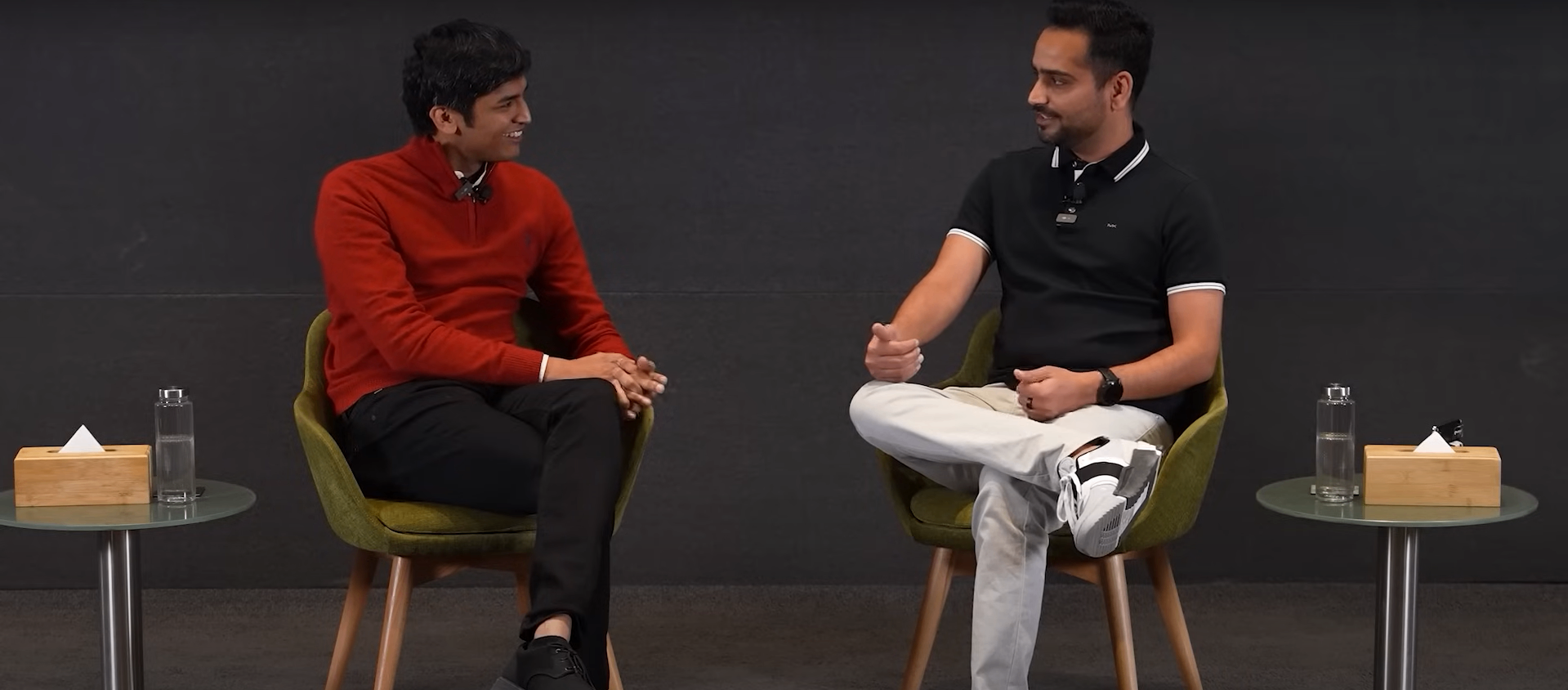
When one thinks of India’s booming consumer electronics market, a few names stand out for their scale, innovation and persistence. Among them is Noise, a homegrown brand that has not only weathered the storm in a crowded, capital-intensive industry but has emerged with over ₹2,000 crore in annual GMV. Entirely bootstrapped and profitable.
This is the story of how Gaurav Khatri, a trained pilot from a middle-class town, transformed a passion for gadgets into one of India’s most successful direct-to-consumer (D2C) brands, as shared in a masterclass session at Masters’ Union.
Want To Watch The Video Instead?
Catch the full conversation with Gaurav Khatri at Masters’ Union for insights straight from the founder. Watch how Noise was built from scratch into a ₹2,000 crore brand.
From Cockpit Dreams to Clicks and Conversions
Gaurav's journey did not begin in a boardroom. In fact, he was on a very different trajectory, training to become a pilot in the Philippines. However, just as he earned his commercial pilot licence, India's aviation sector took a nosedive. Kingfisher Airlines collapsed, Jet Airways began its decline, and Gaurav found himself at a crossroads.
Instead of lamenting missed opportunities, he turned to his second love: technology. As an early adopter of e-commerce, purchasing gadgets from eBay at a time when Flipkart and Snapdeal were still in their infancy, he began to observe inefficiencies and unfulfilled demand in the Indian market. “Why was the customer experience from Indian brands so poor?” he asked.
Thus began a series of experiments, some failed, others wildly successful, that would eventually coalesce into the brand Noise.
Founding ‘Noise’: The Power of a Micro-Start
The initial foray was modest. Mobile cases and accessories, sourced through Gaurav’s cousin and co-founder Amit, who ran a garments export business. The team leveraged free office space, internet access and trial-and-error selling on emerging platforms like Flipkart.
“I didn’t set out to build a massive company,” Gaurav admitted. “It was about validating a hypothesis. Could I identify a market gap and fulfil it?”
That validation came quickly. His first batch of 100 mobile cases sold out in hours. Prices were increased incrementally, demand remained strong and more stock was ordered. But this was no blind luck. It was an outcome of deep market insight and instinct.
Interestingly, Noise had already existed as a brand prior to Gaurav's entry. Early attempts had failed. But Gaurav’s experience, especially with customer preferences and his obsession with design and experience, gave the brand a new direction.
Pivot to Smartwatches: The Audacity of Vision
Despite the early success, Gaurav quickly realised that the accessories market had low entry barriers and would soon be flooded with copycat sellers. The true opportunity lay elsewhere, in smart wearables.
In 2016, long before the smartwatch market had matured in India, Noise began investing in R&D. At that time, only Fitbit and Apple were operating in the segment, both with limited penetration. Gaurav saw an emerging trend. Consumers were seeking affordable, functional wearables with good design.
“Why build what’s already been built?” he said. “We needed product differentiation. Something that didn’t just look good, but was smart and served a purpose.”
The team partnered with technology firms across Korea, Taiwan and China. Many of these manufacturers had no Indian presence and were eager to find reliable partners. Shared motivations allowed collaboration, even without the deep pockets of VC-backed rivals.
A Brand Built Without Capital
Noise is a rarity in India’s D2C ecosystem. At the time of this writing, it is the only profitable Indian consumer electronics brand to reach ₹2,000 crore in GMV without external funding.
What’s even more striking is the company’s methodical approach to growth. Initial revenue from mobile accessories funded product development. Over the years, infrastructure like supply chains, customer support and digital marketing was built out slowly and deliberately.
Gaurav stressed the importance of being early to market. Their first smartwatch, Noise Impulse, launched with just a 2,000-unit order. It featured a colour screen, unlike the black-and-white smart bands that were common then. It sold out within weeks, validating the market need.
A three-pronged decision framework guided their launch:
-
Data: Search trends on Amazon and Google confirmed demand.
-
Ecosystem readiness: Platforms were emerging, and supply chains were available.
-
Gut instinct: Gaurav’s lived experience and vision.
Building for Tier-1 India First
Noise’s focus has always been urban and aspirational. “I was deprived of a great customer experience as a child,” Gaurav explained. “That stayed with me. I wanted to build products that Indian consumers could be proud of. Globally competitive, thoughtfully designed and genuinely useful.”
Even when Noise expanded into the mass market, the brand’s design-first, experience-forward philosophy didn’t change. From smartwatch UI to packaging to influencer campaigns, every element was tightly controlled.
More recently, Noise launched India’s first smart ring, priced around ₹16,000, significantly higher than their smartwatch line. But this was intentional. “Tech-savvy users in India are willing to pay for quality,” Gaurav said. “It’s not always about being the cheapest.”
Marketing Muscle: Virality over Vanity
Despite its profitability, Noise never overextended itself in splashy campaigns. Instead, it chose sharp, ROI-driven marketing.
-
A “No. 1 Smartwatch Brand in India” campaign that achieved 80% ad recall.
-
Endorsements from celebrities like Virat Kohli and Rohit Sharma, launched with tailored storytelling.
-
Relentless experimentation with social media and content, rather than expensive sponsorships like the Cricket World Cup.
When asked whether Drop Shipping can build a brand, Gaurav answered frankly. “It can get you started. But if your product has no value, your brand only exists in your mind.”
Lessons for Founders
-
Start with the customer, not the idea. Gaurav’s success came from relentless alignment with consumer needs, not assumptions.
-
Don’t chase funding first. Build a revenue engine that can support your experiments.
-
Build deep partnerships. Global suppliers helped Noise develop capabilities far beyond its budget.
-
Timing matters. Being early to an emerging category created lasting competitive advantage.
-
Design is not a luxury. It's a differentiator, even in price-conscious markets.
In Conclusion
Gaurav Khatri’s session at Masters’ Union wasn’t just an inspiring founder tale. It was a masterclass in strategic thinking, brand building and scaling with discipline. In a world obsessed with fundraising rounds and burn rates, Noise is a powerful reminder that profitable, product-first brands can still thrive. Even in one of the world’s most competitive markets.

